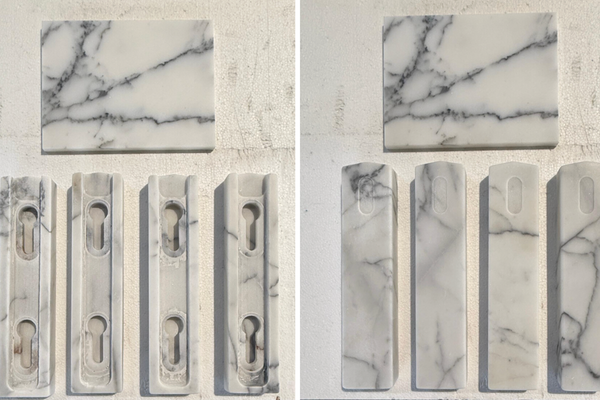
As well as the immediate crisis caused by hundreds of schools facing partial or complete closure because of risks from a form of concrete construction, there is a wider political row brewing as people ask why this is happening days before the start of the school term. Here is what we know.
How long has this been known as a problem?
To an extent, ever since reinforced autoclaved aerated concrete, or Raac, started to be used. The lightweight construction material, predominantly found in roofs, was only ever given a usable lifespan of about 30 years. It was put into schools and other public buildings from the 1950s to the mid-1990s, meaning that more or less all instances of it are now officially deemed not fully safe.
The government says expert advice has changed and that in the 1990s it was believed that even time-expired Raac was not a risk.
Since the roof of a primary school in Kent collapsed in 2018, there have been repeated warnings and calls for action, with the Local Government Association, which represents councils, highlighting the issue repeatedly to members.
In 2021 and last year, the Office of Government Property (OGP) sent out a formal warning notice about Raac, stressing that the material was “now life-expired and liable to collapse” and highlighting how collapses had happened in schools with minimal or no notice.
The Department for Education (DfE) has been preparing contingency plans for schools since then. Some experts say much more should have been done earlier.
Geoff Wilkinson, a senior building inspector, said: “The risk has been known about for decades. There should have been an ongoing maintenance plan for these buildings to be upgraded and replaced over the last 40 years. They are all past their serviceable lifetime. It’s shocking to discover that the maintenance plan wasn’t in place and there hadn’t been a programme of demolitions.”
What triggered the sudden move to close schools?
The stated reason was a spate of incidents in which Raac panels in public buildings – some in schools, some in other institutions – failed without any warning. While the DfE has declined to identify any of the locations, the catalyst for the alert is believed to have been the collapse of a beam at an educational building in England last week.
Given the many warnings about Raac since 2018, there will be questions about why it took more failures to instigate action. There has been speculation that government lawyers may have warned ministers of the need to act, but there has been no confirmation of that. Any advice would be confidential.
What is being done to uncover the scale of the problem?
Last year, the DfE sent a questionnaire to schools, councils, academy trusts and others, asking them to assess the amount of Raac used across their buildings. The DfE has not specified how many were sent out, but officials say 90% have been returned.
The department also sent structural engineers to some sites to gauge the amount of Raac and its condition. The engineers were instructed to rate the risk of failure for any Raac construction, ranging from critical – meaning the relevant rooms, blocks or buildings should be immediately closed – to high, medium or low.
This year, the National Audit Office said that of 14,900 schools potentially having Raac, 6,300 had told the DfE they had completed work to identify it. In July, the DfE said 300 schools had thus far had on-site inspections.
James Porter, a building consultancy partner at Rapleys, a property consultancy, said the actual number of schools with Raac was likely to be considerably higher than those found so far. He is working with the London borough of Hounslow to investigate about 50 schools and said at least 12 were suspected of having it.
To confirm its presence, extensive works are required, involving the removal of false ceilings and asbestos to get to the material, requiring specialist asbestos contractors and scaffolding.
Porter said: “We are very much at the beginning of solving the problem and time is running out before an incredibly serious incident could take place.”
Could other public sector buildings be affected?
Yes. Much as with schools, the full extent of any problem remains unknown, but Raac construction was used widely beyond just schools and colleges.
In July, the OGP set up a formal working group to try to coordinate action about potential risks from Raac across public buildings more widely.
So far, 24 hospitals in England have been found to have Raac-based construction in some or all parts, seven of which require full rebuilding under the government’s hospital construction programme.
Four Department for Work and Pensions buildings are known to be affected, as well as seven courts, one of which is now not being used. More surveys across government buildings are taking place.
Who will pay for the knock-on costs?
Guidance to schools published on Thursday said that while the DfE would pay for any remedial or rebuilding works, schools would be expected to fund “anything that is an additional revenue cost”, such as the rental of temporary accommodation.
This prompted an outcry from schools and unions, and on Friday morning the schools minister, Nick Gibb, said the DfE would cover all capital spending – which he said included paying for any temporary accommodation such as cabins in playgrounds.
He said there had been “some speculation that we won’t cover those costs”. It was less speculation than people reading the DfE’s guidance, which was amended overnight to say the only bills the department would not cover would be in areas such as extra transport.







